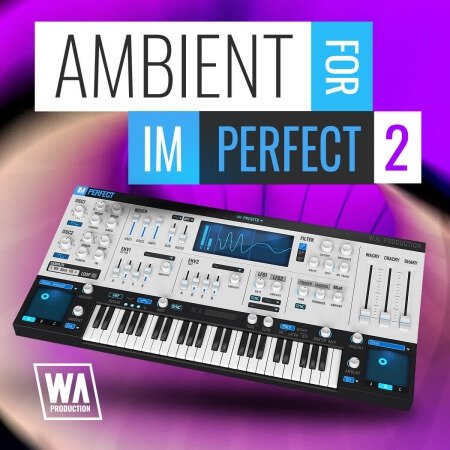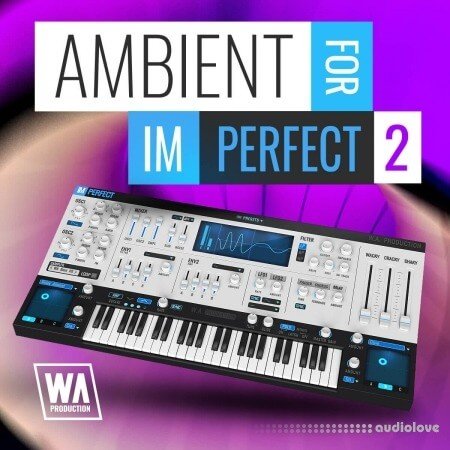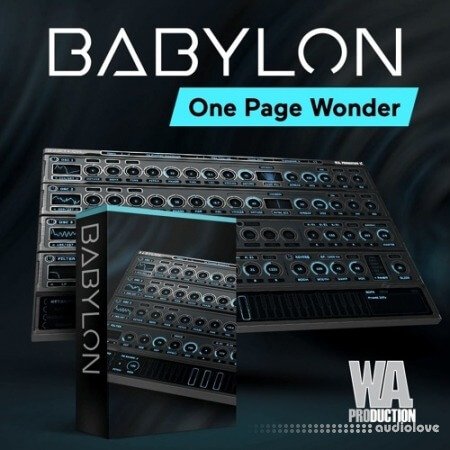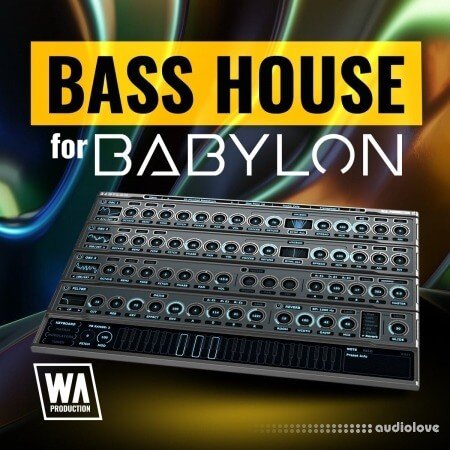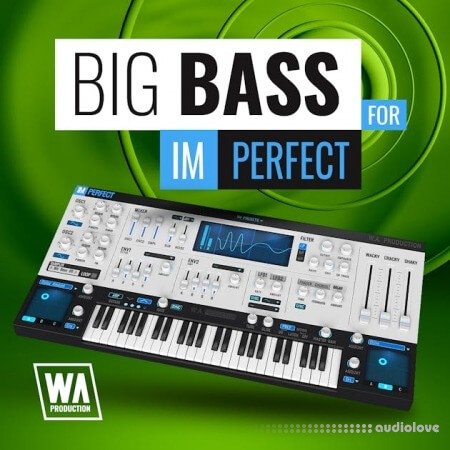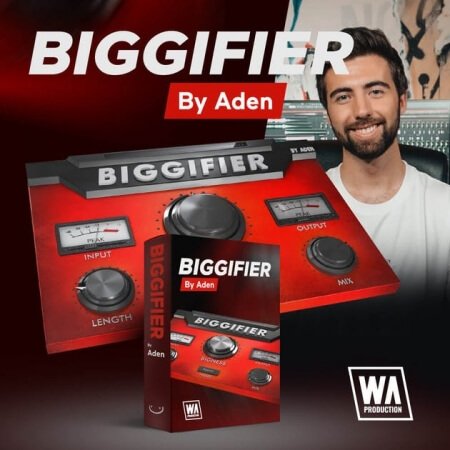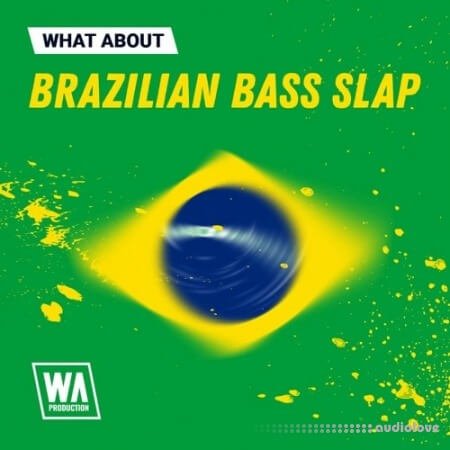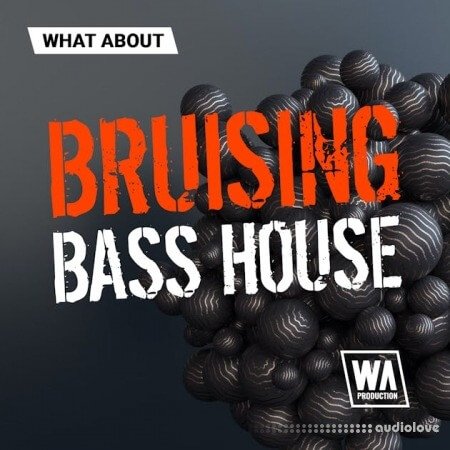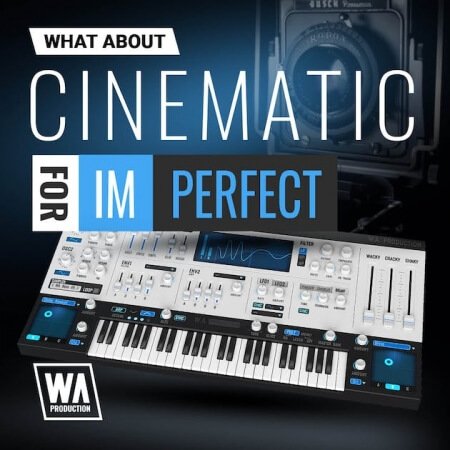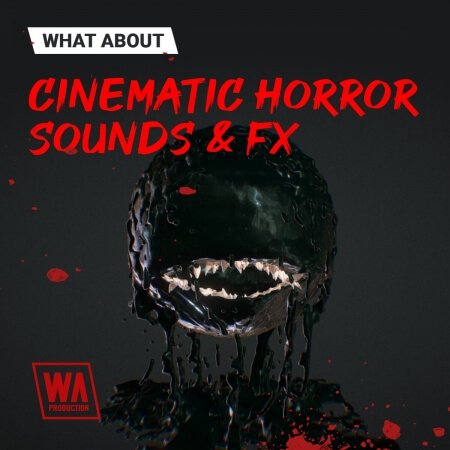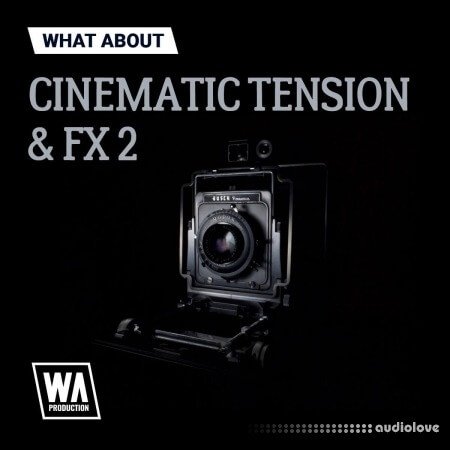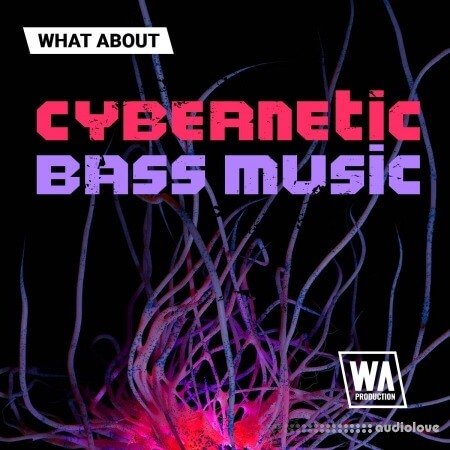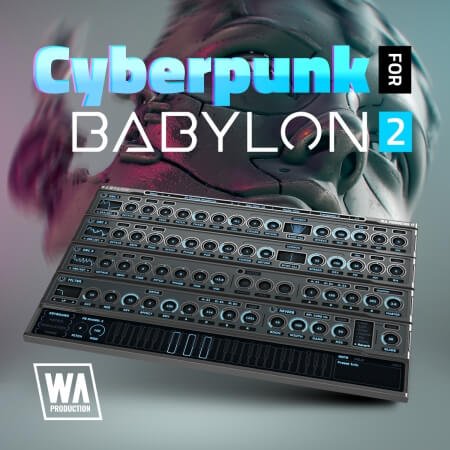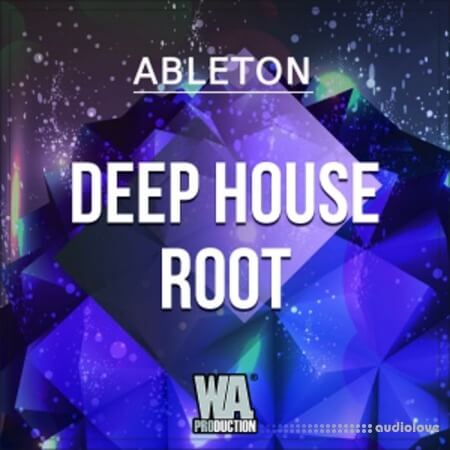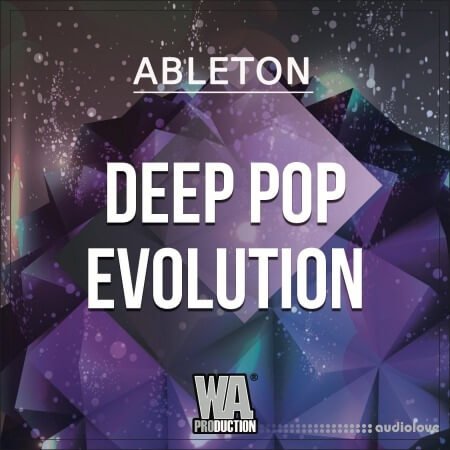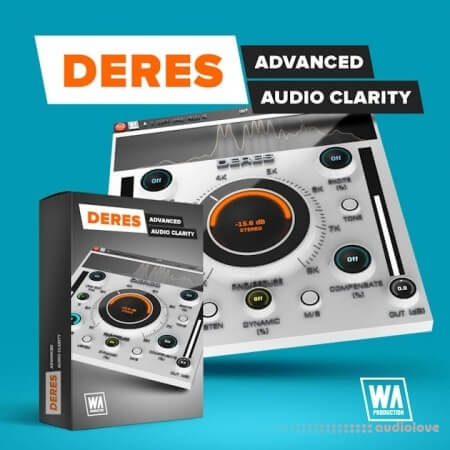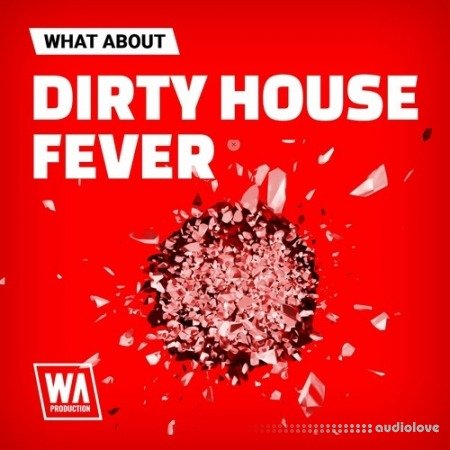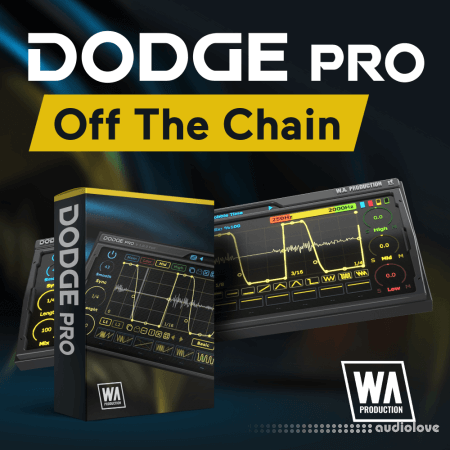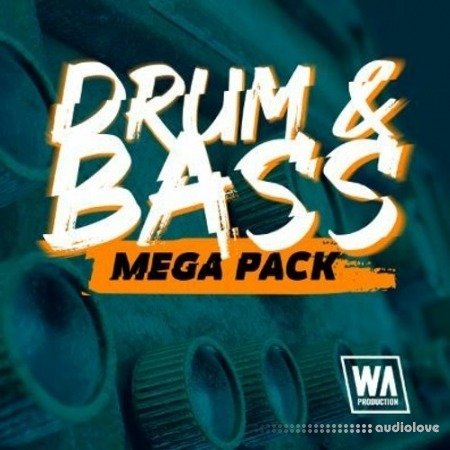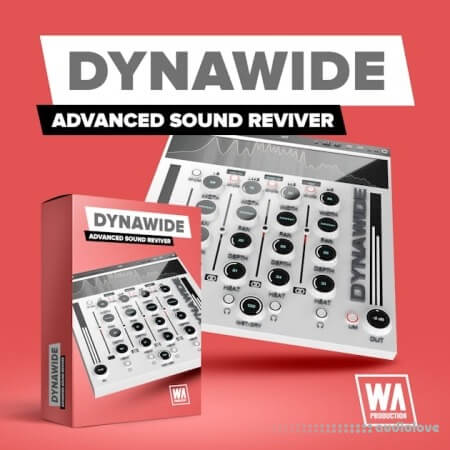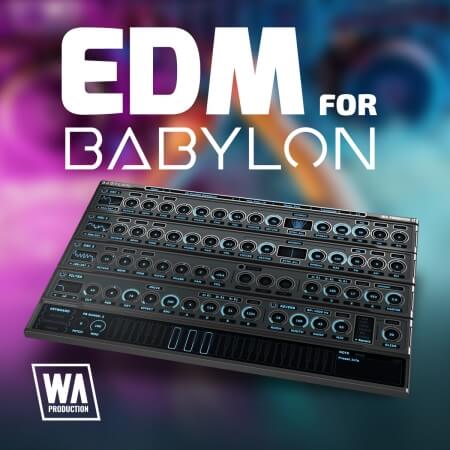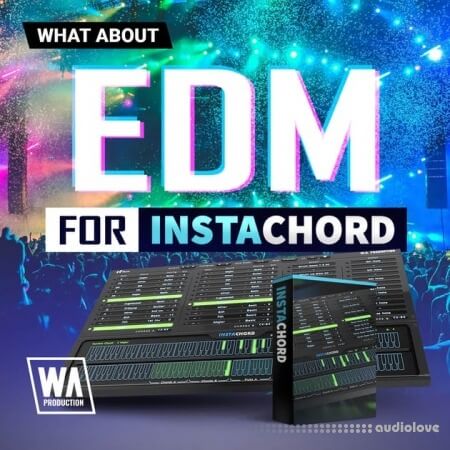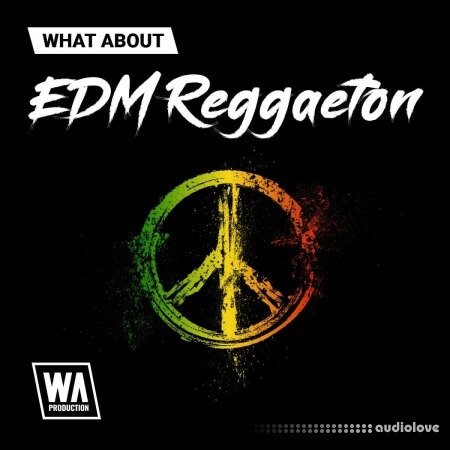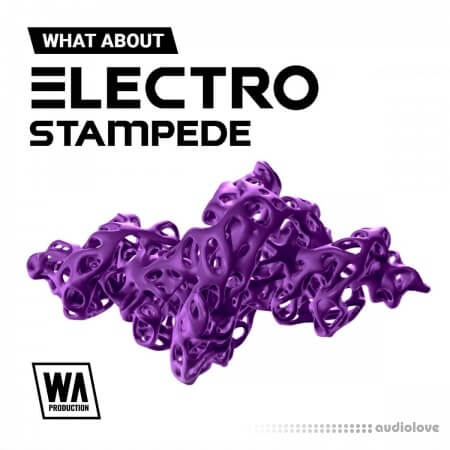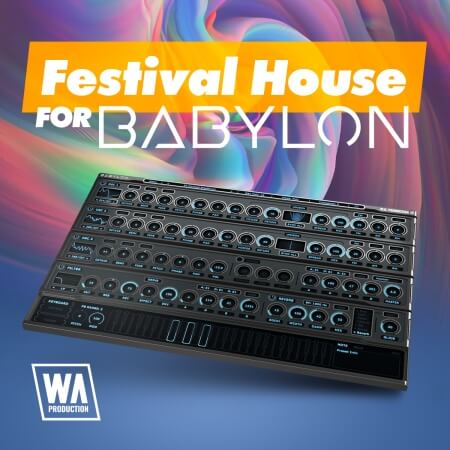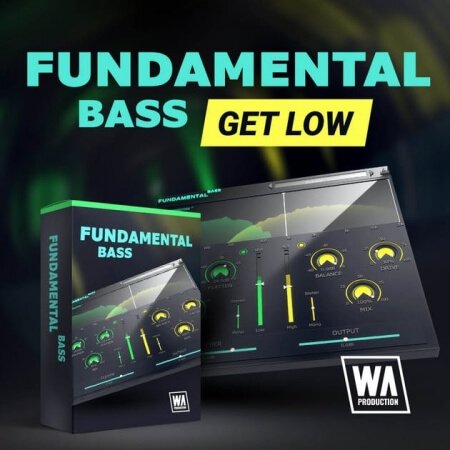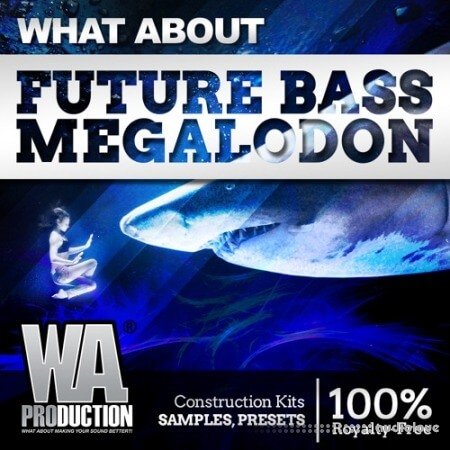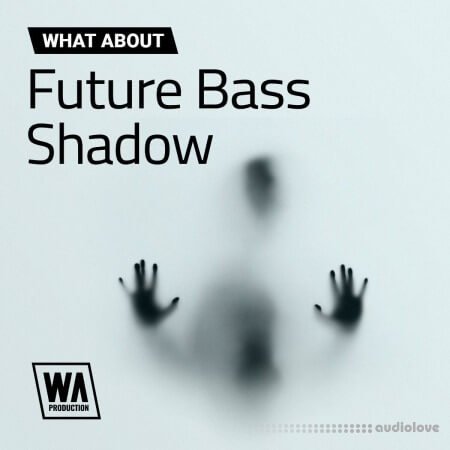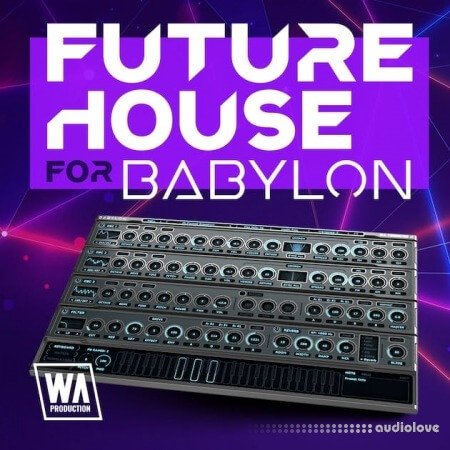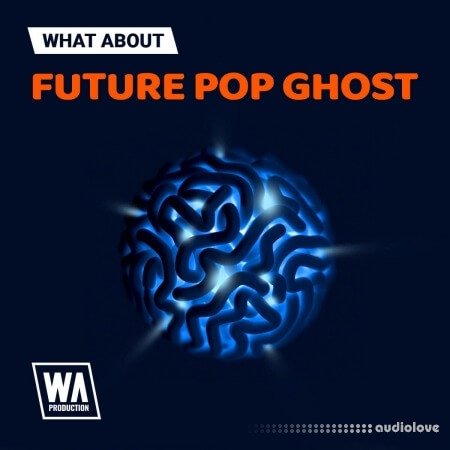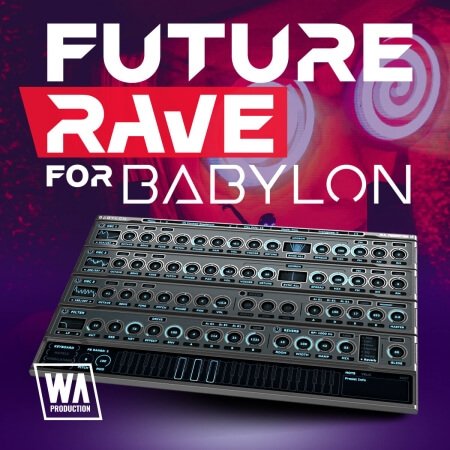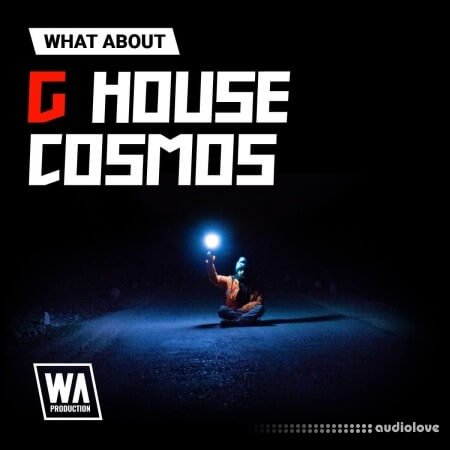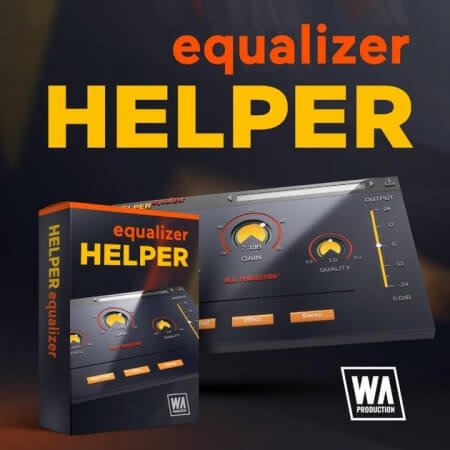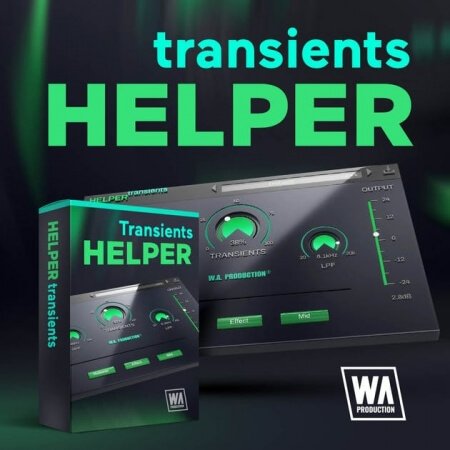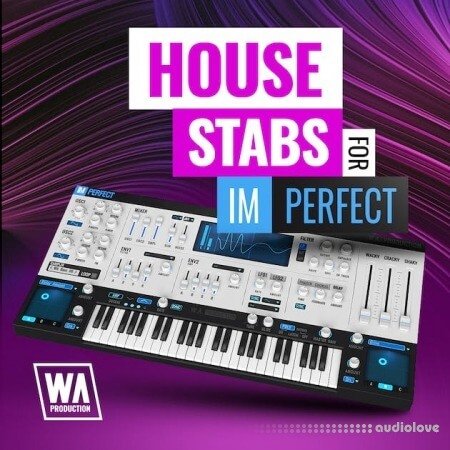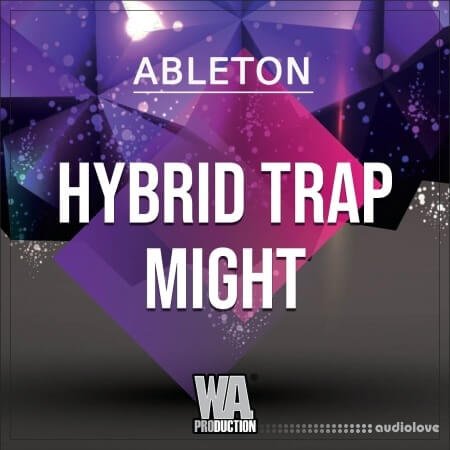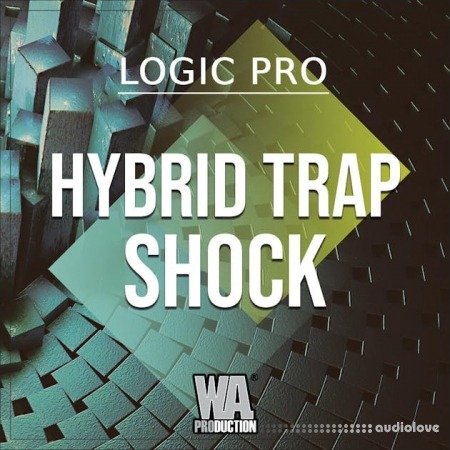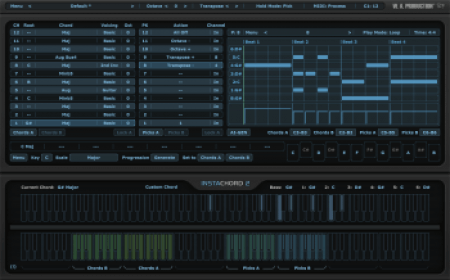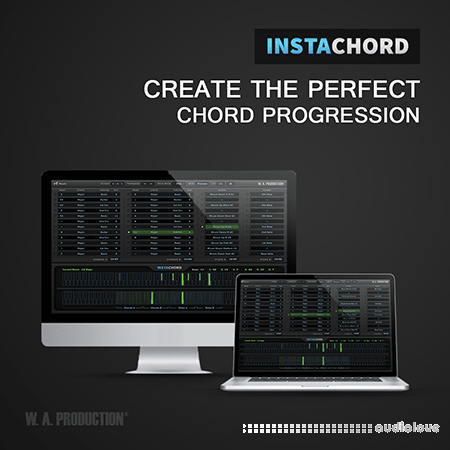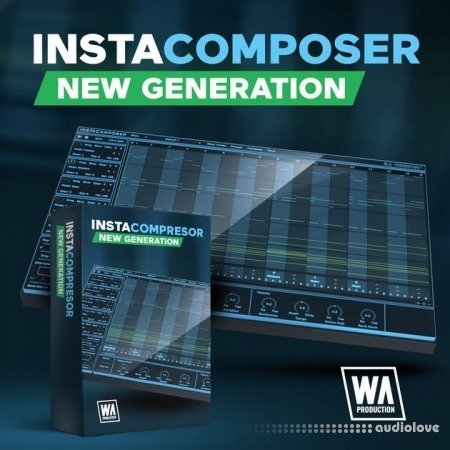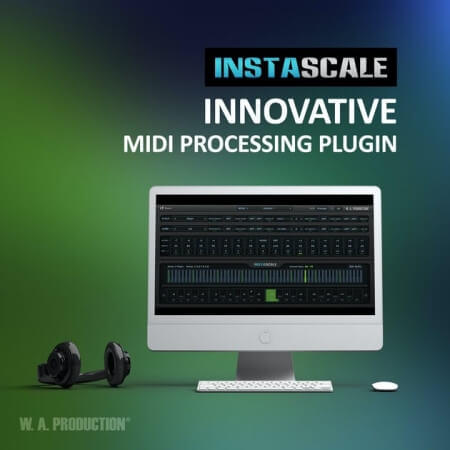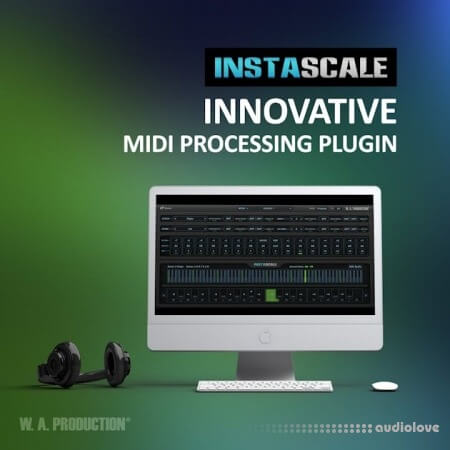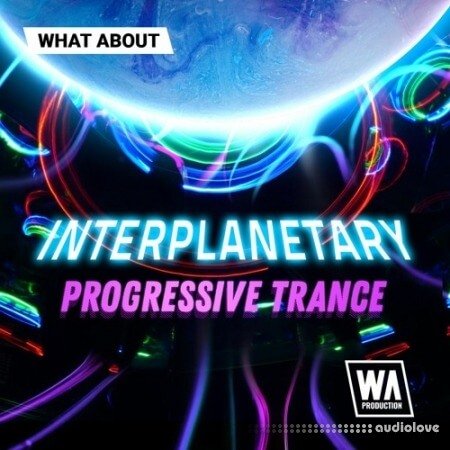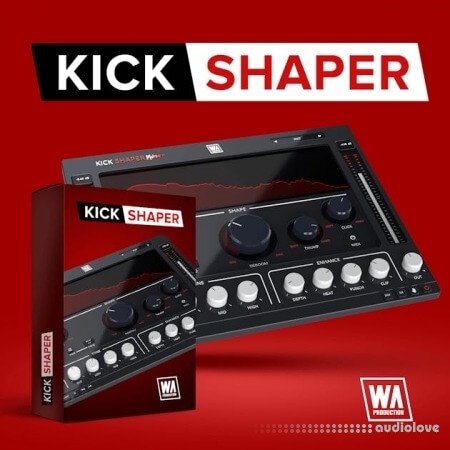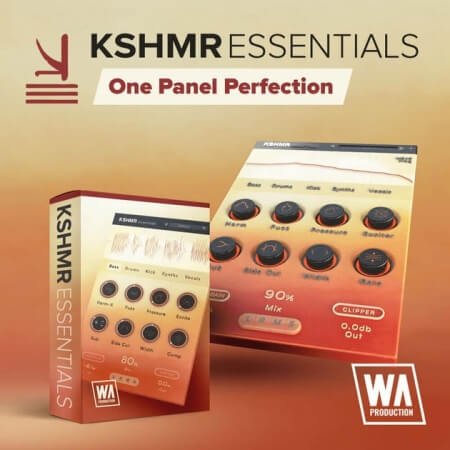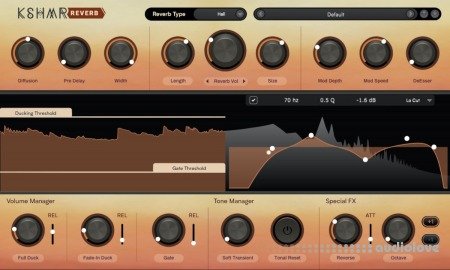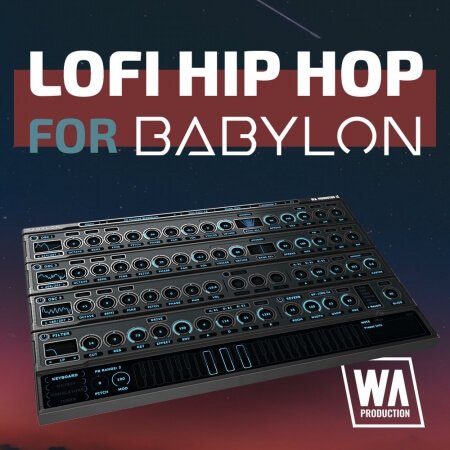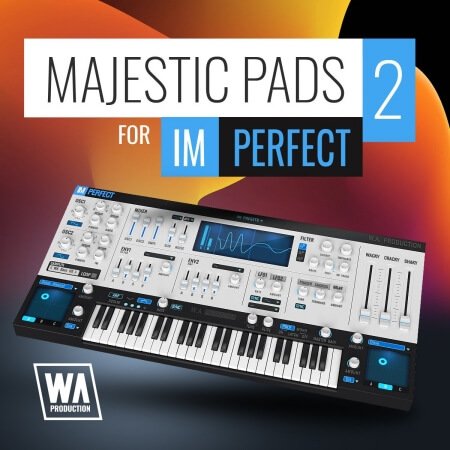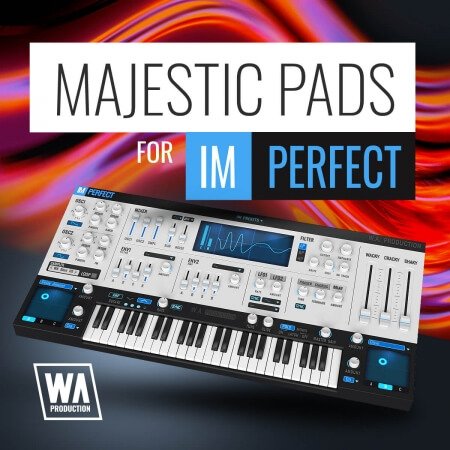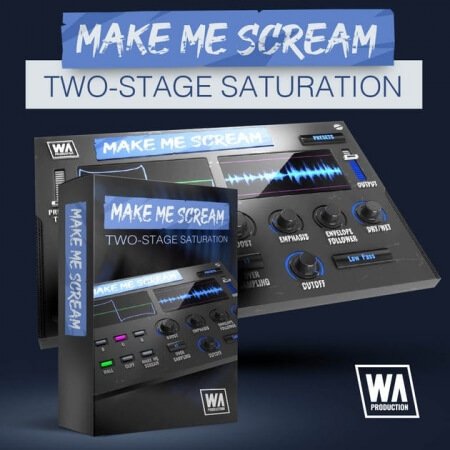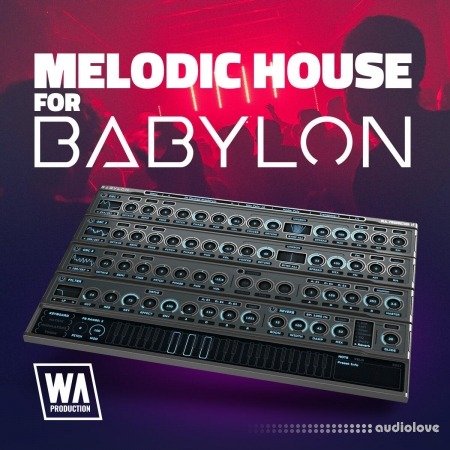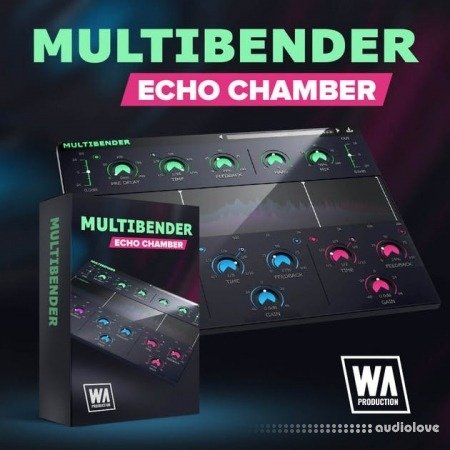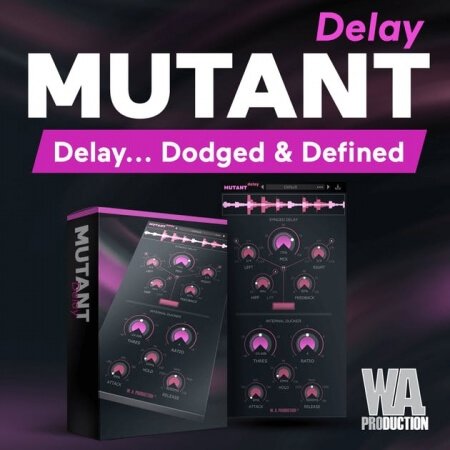Windows

Product Details
FILE DETAILS
P2P | 06 April 2024 | 126 MB
FULL INFO BELOW:
Coalescence is a Max For Live instrument. It is a concatenative multi-sampler that uses machine learning (SOM neural network) to organize similar sample slices into clusters based on a chosen spectral feature. There are three playback modes that take advantage of these clusters in various ways: Point, Rings, and Paths. Additionally, external audio input can be routed for modulations and to control what audio slices play based on its similarity. All of these combined with a robust modulation system makes Coalescence one beast of a compact sampler for many different situations!
Comes with:
The device, user manual, 42 presets, 14 samples, Strange Mod modulator device (for one of the presets)
Version Info:
Works with Live 10 and up!
Features:
?show/hide textSupports dropping of multiple samples, individual or folders (up to 2000), for concatenative sampling. Each sample has individual parameters for pitch, volume, direction and transient sensitivity
Neural Network (SOM) that organizes sample slices based on a chosen spectral feature and visualizes them in a 2D circle
Three playback modes:
Point: choose a single sample slice point to play from, MIDI repitches playback. Closest to a classic sampler. Option for external audio input to control lookup point based on similarity
Rings: MIDI pitches trigger circlular ranges called Rings, when a Ring is triggered it plays a random sample within its range. Great for drum kits, or any kind of sample slicing. There are auto and manual Ring creation options
Paths: MIDI pitches trigger individual playback paths that can glide or jump through the sample slices. Great for creating sequences or all kinds of movement! Alternatively there is a Single path mode in which only one path can be triggered and MIDI pitches instead repitch the playback
Various settings for the network including ones for training and previewing the network:
4 different spectral features to choose for clustering the sample slices:
(Chroma) describes the slice in terms of a 24 step chromatic scale, good for sorting based on tonality. (Mel and Bark) these two describe the slice with intensities from low to high frequencies based on psychoacoustic perceptions of equal distant steps. Each scales the frequencies differently, good for anything you want sorted based on low to high frequencies such as percussion, etc. (Speech) uses Mel Cepstral Coefficients (MFCC) which are commonly used for speech recognition, good for sorting vowels, etc.
Option to use transients only for the sample slices fed into the network or using every spectral frame
Cluster radius size and various training parameters
Various sample playback settings:
Standard playback settings such as voices, playback direction, one shot or loop, loop size (can be in time, beats, or by transient length), pitch, and fade window
Various parameters for the different playback modes and sample slice lookup
A phase vocoder playback mode where you can time stretch. It also has a spectral attack and release for cheap blur effects or fading between specra
External audio input routing with various uses:
Option to have the sampler voices triggered by the input transient detector instead of by MIDI notes. This way you can trigger voices of the sampler with an external input!
As mentioned the input can optionally control what sample slice is playing based on its similarity to the input at any moment. This opens up the doors for a pseudo style-transfer and other effects (Note: they are not the cleanest and most robust results but great for experimentation and can work well if dialed-in and handled correctly). Some examples of uses: beat boxing with voice to trigger drum sounds, having one sound mask another such as style-transfer-esk effect (using the phase vocoder playback mode), creating a voice controlled synth, etc
An envelope follower and pitch detector which can be used for modulation
A modulation system, each modulation source has two mappable destinations:
Two LFOs with perlin noise options
Two envelopes
Two random spray values created at the beginning of each voice
The routed external audio inputs envelope follower and pitch detector
Standard MIDI sources: velocity, key pitch, aftertouch, pitch bend, mod wheel
Per voice filter with a few modes:
Standard simple biquad filter with standard shapes
Ladder filter mode
Vowel or Formant filter mode with formant options, frequecy shifting, spreading, and bandwidth sloping
NOTE OF TRANSPARENCY AND LIMITATIONS:
I do not claim this device to be the most robust neural sample library organizer, so if you are thinking to try and overload the device by dropping in many hundreds of mid-sized samples or very long samples simultaneously you will certainly hit limits. That said, it stil analyzes and trains samples fast, details below
Dropping in say a hundred or two one shot drum samples will be analyzed and trained by the network fast, but if they are hundreds of loops over 10 seconds in length each, that may take some time depending on the details
Dropping in individual samples up to about thirty seconds is fast (analyzes instantly for short samples and about 1-2 seconds up to thirty depending on samplerate), over that you may wait a few seconds or way longer depending how much longer. If you drop in a thirty minute sample you will be waiting a while (samplerate matters too)
An imporant note is that although the device can handle up to 2000 samples, the neural network only has 2500 slots for holding sample slices, so unless the samples are one-shot percussion samples you will fill up the network loooooong before you reach 2000 samples. Therefore this device is meant more to work with a handful of samples, or many one-shot samples than an entire library
Similarly, the neural network training time will vary a lot depending on how much sample data there is, and whether you are only sending in transients or every spectral frame. Sending in transients only is generally very fast but it depends on how much sample content there is
The good news is that the nerual network is saved in the device instance or preset, so if you do train a large amount of sample data, you wont have to again. Similarly for the sample analysis there is an option to save the analysis files so if you want to load a preset or long sample instantly you can have the analysis file saved
CURRENT ISSUES WITH SAMPLE LOADING:
(1): Protected samples from Ableton Packs cannot be loaded. This is because I cannot use the Live.Drop object to decode protected samples because of the multisample nature of the device.
(2): Samples dropped into Coalescence that were recorded in a never before saved Live set will not be recalled. This is because the path of the Live Set changes after it is saved for the first time and there is no legitimate way of getting the Path of the current Live set to work with paths relatively (a huge flaw in MaxForLive). This will also cause issues with changing Live Set names. In the meantime, always save your Live set for the first time before dropping in samples that were recorded in that Live set. If you accidently do that, just drop and swap the samples out after youve saved the set for the first time!
To Install And Use Presets:
Drop the entire folder called Coalescence (NOT the folder called Coalescence v.x.x.x) into the folder ableton/user library/presets/instruments/max instrument. This is found in the Places section in Lives browser or in your finder/file browser. If you are going through finder (mac) the Ableton folder is typically in your Music folder. If you are going through your file browser (windows) it is typically in the My Music folder. The path to the .amxd file should be: ableton/user library/presets/instruments/max instrument/Coalescence/Coalescence.amxd
NOTE: There are two issues with certain sample loading situations at the moment, scroll down to the CURRENT ISSUES WITH SAMPLE LOADING section below for more info...
Video
Dillon Bastan Coalescence v1.0.6 [Max for Live]
Added: 06.Apr.2024
FileSize: 126 MB
Catagory: Additional
Product ID: 57179
Our Price Before 10% Deduction
Bonuses For Regular Customers
£4.99
ADD TO YOUR CART or BUY NOW
Or Contact Us For Alternative Payment Options

Add To Favorites
Delivery & Download


Delivery Details
-
A Link is sent to your Email
Once your order has been placed an initial email will be provided to notify you that your order has been received , You can expect to recieve this confirmation email within 5 - 15 minutes after your purchase.
The Email Delivered soon after confirmation will contain a Link that will take you to your Download.
Download times are dependent on your own internet speeds.
You will receive in your download ALL Files needed for install
These files will include Everything Needed To Setup The Product
Including Full Install And Activation Instructions Or a Video
Any Serials or Activators Will Also Be Provided.

More Results
Use Search Menu To Change Results
WA Production Ambient and Cinematic for InstaChord [Synth Presets]
11 Jan 2021
Presets
Cinematic / Ambient or ChillOut Discover a whole new world of chords for your next production. Introducing Ambient & Cinematic for Instachord from W. A. Productio
Cinematic / Ambient or ChillOut Discover a whole new world of chords for your next production. Introducing Ambient & Cinematic for Instachord from W. A. Productio
WA Production Ambient for ImPerfect 2 v3 [Synth Presets]
20 Jan 2023
Presets
Ambient or ChillOut Unique ambiance awaits inside the latest expansion pack from W. A. Production, Ambient for ImPerfect 2. Explore a world full of s
Ambient or ChillOut Unique ambiance awaits inside the latest expansion pack from W. A. Production, Ambient for ImPerfect 2. Explore a world full of s
WA Production Ambient For ImPerfect v2 [Synth Presets]
19 Jan 2023
Presets
Ambient or ChillOut Unique ambiance awaits inside the latest expansion pack from W. A. Production, Ambient for ImPerfect 2. Explore a world full of s
Ambient or ChillOut Unique ambiance awaits inside the latest expansion pack from W. A. Production, Ambient for ImPerfect 2. Explore a world full of s
WA Production Babylon v1.0.3 / v1.0.1 Build12 RETAiL
17 Aug 2021
WA Production Babylon v1.0.4b230928
20 Nov 2023
Windows
Babylon One Page Wonder Weve been wanting to create a synth like Babylon for years, after struggling with synths that overcomplic
Babylon One Page Wonder Weve been wanting to create a synth like Babylon for years, after struggling with synths that overcomplic
WA Production Bass House District [WAV, MiDi, Synth Presets]
01 Feb 2021
WA Production Bass House for Babylon [Synth Presets]
14 Jan 2023
WA Production Big Bass For ImPerfect [Synth Presets]
14 Jan 2023
WA Production Big Plucks For ImPerfect [Synth Presets]
14 Jan 2023
WA Production Biggifier v1.0.0
17 Aug 2021
Windows
BIGGIFIER by Aden is a powerful one-knob that delivers an instant and addictive shot to the metaphorical arm of any sound. Jack up
BIGGIFIER by Aden is a powerful one-knob that delivers an instant and addictive shot to the metaphorical arm of any sound. Jack up
WA Production Bruising Bass House [WAV, MiDi, Synth Presets]
09 Jan 2023
WA Production Bundle 39 In 1 [WAV, MiDi, Synth Presets, DAW Templates]
14 Jun 2024
Samples / Presets / MiDi / ProjectsTemplates
Rap or Hip Hop / Trap or Trapstep / Dubstep or Drumstep / Hous? / Trance / Progressive / EDM / Drum and Bass WA Production Future EDM TwistWA Production Future Bass LizardWA Production Tech House AssumeWA Production Future Bass BestWA Prod
Rap or Hip Hop / Trap or Trapstep / Dubstep or Drumstep / Hous? / Trance / Progressive / EDM / Drum and Bass WA Production Future EDM TwistWA Production Future Bass LizardWA Production Tech House AssumeWA Production Future Bass BestWA Prod
WA Production Captain K-Pop [WAV, MiDi, Synth Presets]
09 Jan 2023
WA Production CHORDS Pro + Notes v1.0.0
31 Oct 2022
Windows
Pro-grade chord & arpeggio progressions for instant inspiration This inspirational plugin keeps getting better and better. After
Pro-grade chord & arpeggio progressions for instant inspiration This inspirational plugin keeps getting better and better. After
WA Production CHORDS v1.0.0
16 Jan 2022
Windows
When you first sit down at a blank project sometimes you need a fresh hit of motivation and creativity. Thats why CHORDS is here f
When you first sit down at a blank project sometimes you need a fresh hit of motivation and creativity. Thats why CHORDS is here f
WA Production ChromaBox v1.0.0
13 Apr 2024
Windows
ChromaBox (Previously ColorBox) Due to a name similarity with another plugin on the market, we have decided to change the name of
ChromaBox (Previously ColorBox) Due to a name similarity with another plugin on the market, we have decided to change the name of
WA Production Cinematic For ImPerfect v2 [Synth Presets]
11 Jan 2023
Presets
Cinematic / Electronic Creating epic cinematic soundscapes relies heavily on the most unique and creative sounds. The best way to achieve these types of
Cinematic / Electronic Creating epic cinematic soundscapes relies heavily on the most unique and creative sounds. The best way to achieve these types of
WA Production Cinematic Horror Sounds and FX [WAV, MiDi]
15 Sep 2023
WA Production Cinematic Tension and FX 2 [WAV, MiDi, Synth Presets]
10 Feb 2021
WA Production ColorBox v1.0.0
30 Mar 2024
Windows
Spectrum Exciter. Have you ever had one of those moments where you just want to click a button and hear your sound come alive with
Spectrum Exciter. Have you ever had one of those moments where you just want to click a button and hear your sound come alive with
WA Production Cybernetic Bass Music [WAV, MiDi, Synth Presets]
08 Jan 2023
WA Production Cyberpunk for Babylon 2 [Synth Presets]
20 Jan 2023
Presets
Cyberpunk Cyberpunk for Babylon 2 Our first Cyberpunk expansion was one of our most popular releases for our Babylon Synth. We think thats b
Cyberpunk Cyberpunk for Babylon 2 Our first Cyberpunk expansion was one of our most popular releases for our Babylon Synth. We think thats b
WA Production Deep and Chill House [WAV, Synth Presets, DAW Templates]
28 Dec 2020
Samples / Presets / ProjectsTemplates
Deep House What about: Deep & Chill House is a a beautiful journey into chilled & progressive Deep House. These sounds and melodies are gorge
Deep House What about: Deep & Chill House is a a beautiful journey into chilled & progressive Deep House. These sounds and melodies are gorge
WA Production Deep and Future Clay [WAV, MiDi, Synth Presets]
28 Dec 2020
Samples / Presets / MiDi
Deep House W. A. Production is super excited to bring Future & Deep Clay, a Deep House based Template we created to show producers like yours
Deep House W. A. Production is super excited to bring Future & Deep Clay, a Deep House based Template we created to show producers like yours
WA Production Deep and Future Might [MULTiFORMAT]
04 Jan 2023
Samples / Presets / MiDi / ProjectsTemplates
Deep House / Hous? W. A. Production is super excited to bring Deep & Future Might, a Future and Deep based Template we created to show producers like
Deep House / Hous? W. A. Production is super excited to bring Deep & Future Might, a Future and Deep based Template we created to show producers like
WA Production Deep House Root (Ableton) [WAV, MiDi, DAW Templates]
14 Jun 2024
Samples / MiDi / ProjectsTemplates
Deep House W. A. Production is super excited to bring Deep House Root, a Deep House based Template we created to show producers like yourself
Deep House W. A. Production is super excited to bring Deep House Root, a Deep House based Template we created to show producers like yourself
WA Production Deep Pop Evolution [WAV, MiDi, Ableton Live]
29 Dec 2020
Samples / Additional Libraries / MiDi
Pop Here we go again, bringing the producers of our community the best of the best production resources for you to study and abuse to
Pop Here we go again, bringing the producers of our community the best of the best production resources for you to study and abuse to
WA Production Deres v1.0.0
26 Apr 2024
Windows
Advanced Audio Clarity Whether its stacking synths or building bass lines, layering multiple instruments always creates a huge so
Advanced Audio Clarity Whether its stacking synths or building bass lines, layering multiple instruments always creates a huge so
WA Production Dirty House Fever [WAV, MiDi, Synth Presets]
31 Jan 2021
WA Production Distorted Sounds For ImPerfect [Synth Presets]
20 Jan 2023
Presets
Electronic Distorted sounds can be game-changers in a wide variety of genres. Theyre a fantastic way to add texture, grit, and realistic flav
Electronic Distorted sounds can be game-changers in a wide variety of genres. Theyre a fantastic way to add texture, grit, and realistic flav
WA Production Dodge Pro v1.1.1 / v1.0.1b7 RETAiL
17 Aug 2021
WA Production Drum & Bass For Babylon [Synth Presets]
14 Jan 2023
Presets
Drum and Bass Drum and Bass has been around for decades, but the top producers in the genre are continuing to innovate. As Drum and Bass appeal
Drum and Bass Drum and Bass has been around for decades, but the top producers in the genre are continuing to innovate. As Drum and Bass appeal
WA Production Drum and Bass Mega Pack [MULTiFORMAT]
31 Jan 2021
Samples / Presets / MiDi / ProjectsTemplates
DnB Bundles are, without a doubt, the best way to get a great deal on W. A. Production products, and the Drum & Bass Mega Pack is no e
DnB Bundles are, without a doubt, the best way to get a great deal on W. A. Production products, and the Drum & Bass Mega Pack is no e
WA Production Dynawide v1.0.0
21 jun 2024
Windows
Advanced Sound Reviver When it comes to audio processing, sometimes happy mistakes can transform your sound in surprising ways. Bu
Advanced Sound Reviver When it comes to audio processing, sometimes happy mistakes can transform your sound in surprising ways. Bu
WA Production EDM For Babylon [Synth Presets]
20 Jan 2023
Presets
EDM EDM For Babylon Do you make unique electronic music that cant be defined by any certain genre? Weve got the ultimate expansion pac
EDM EDM For Babylon Do you make unique electronic music that cant be defined by any certain genre? Weve got the ultimate expansion pac
WA Production EDM for InstaChord [Synth Presets]
11 Jan 2021
WA Production EDM Reggaeton [WAV, MiDi]
01 Feb 2021
WA Production EDM Vocals of the East 2 [WAV, MiDi, Synth Presets]
09 Jan 2023
WA Production Electro Stampede [WAV, MiDi, Synth Presets]
02 Feb 2021
WA Production Festival House For Babylon [Synth Presets]
20 Jan 2023
Presets
Hous? Festival House For Babylon There are so many varieties of House music, and they all have their own character and flavor. However,
Hous? Festival House For Babylon There are so many varieties of House music, and they all have their own character and flavor. However,
WA Production Fishy Tech House [WAV, MiDi, Synth Presets]
14 Jun 2024
Samples / Presets / MiDi
Hous? / Techno or Tech House Its time to break away from the tech-house stigma and get back to the roots of what made this music exciting. W. A. Production put
Hous? / Techno or Tech House Its time to break away from the tech-house stigma and get back to the roots of what made this music exciting. W. A. Production put
WA Production Fundamental Bass v2.0.0
17 Aug 2021
Windows
As a famous vocalist once sang, ?Its all about the bass? and in as far as most genres of music are concerned, shed be correct! Bas
As a famous vocalist once sang, ?Its all about the bass? and in as far as most genres of music are concerned, shed be correct! Bas
WA Production Future Bass MEGALODON [WAV, MiDi, Synth Presets, DAW Templates]
31 Dec 2022
Samples / Presets / MiDi / ProjectsTemplates
Future Bass W. A. Productions presents What about: Future Bass Megalodon! An amazingly action pack filled pack, FULL of excitement and high en
Future Bass W. A. Productions presents What about: Future Bass Megalodon! An amazingly action pack filled pack, FULL of excitement and high en
WA Production Future Bass Shadow [WAV, MiDi, Synth Presets]
03 Feb 2021
Samples / Presets / MiDi
Future Bass What about: Future Bass Shadow from W. A. Productions gives you beautiful chord progressions, warm pads, bright leads, deep drums,
Future Bass What about: Future Bass Shadow from W. A. Productions gives you beautiful chord progressions, warm pads, bright leads, deep drums,
WA Production Future Dubstep Jade [WAV, MiDi, Synth Presets]
03 Feb 2021
Samples / Presets / MiDi
Dubstep or Drumstep What about: Future Dubstep Jade from W. A. Production takes everything you love about future bass and increases the intensity and
Dubstep or Drumstep What about: Future Dubstep Jade from W. A. Production takes everything you love about future bass and increases the intensity and
WA Production Future House for Babylon 2 [Synth Presets]
20 Jan 2023
Presets
Hous? Future House for Babylon 2 Babylon is a powerful and capable synth that can be used in any production. People loved our first Futu
Hous? Future House for Babylon 2 Babylon is a powerful and capable synth that can be used in any production. People loved our first Futu
WA Production Future House For Babylon [Synth Presets]
19 Jan 2023
WA Production Future Pop Ghost [WAV, MiDi]
03 Feb 2021
WA Production Future Rave For Babylon [Synth Presets]
20 Jan 2023
Presets
EDM Future Rave For Babylon Nothing inspires us quite like heading out and going to a rave! The energy, emotion, and overall vibe are
EDM Future Rave For Babylon Nothing inspires us quite like heading out and going to a rave! The energy, emotion, and overall vibe are
WA Production Future Rave for ImPerfect v2 [Synth Presets]
20 Jan 2023
Presets
EDM / Future Rave ImPerfect is one of the most unique synths on the market today. Its detuned oscillators and modulating effects provide the power t
EDM / Future Rave ImPerfect is one of the most unique synths on the market today. Its detuned oscillators and modulating effects provide the power t
WA Production G House Cosmos [WAV, MiDi, Synth Presets]
03 Feb 2021
WA Production Hardstyle For Babylon [Synth Presets]
11 Jan 2023
Presets
Hard Dance Hardstyle for Babylon gives you a Psy/Hardstyle Expansion pack of over 100 presets for Babylon. Hardstyle Preset Pack from W. A. P
Hard Dance Hardstyle for Babylon gives you a Psy/Hardstyle Expansion pack of over 100 presets for Babylon. Hardstyle Preset Pack from W. A. P
WA Production Helper Equalizer 2 v2.1.0
17 Aug 2021
Windows
Helper Equalizer 2 is a unique and versatile equalizer plug-in that contains special features with excellent workflow and a simple
Helper Equalizer 2 is a unique and versatile equalizer plug-in that contains special features with excellent workflow and a simple
WA Production Helper Saturator 2 v2.1.0
17 Aug 2021
Windows
Helper Saturator 2 is an audio effect VST plugin professionally designed to apply saturation to the audio signal. Helper Saturator
Helper Saturator 2 is an audio effect VST plugin professionally designed to apply saturation to the audio signal. Helper Saturator
WA Production Helper Transients 2 v2.1.0
17 Aug 2021
Windows
Being able to control the shape of the sounds is extremely useful for musicians when they are mixing their music. But Helper Trans
Being able to control the shape of the sounds is extremely useful for musicians when they are mixing their music. But Helper Trans
WA Production Holy Bass House [WAV, MiDi, Synth Presets, Ableton Live]
01 May 2022
Samples / Additional Libraries / Presets / MiDi
Future Bass Ever heard your favorite DJ drop an absolute banger, and it makes you go crazy?! Thats what the sounds in What about: Holy Bass Ho
Future Bass Ever heard your favorite DJ drop an absolute banger, and it makes you go crazy?! Thats what the sounds in What about: Holy Bass Ho
WA Production House Rhytm Guitar [WAV]
7 Jan 2023
Samples
Hous? / Deep House / Pop / Progressive What about: House Rhythm Guitar is a unique pack from W.A. Production for all House and EDM producers out there. This product cont
Hous? / Deep House / Pop / Progressive What about: House Rhythm Guitar is a unique pack from W.A. Production for all House and EDM producers out there. This product cont
WA Production House Stabs for ImPerfect [Synth Presets]
14 Jan 2023
WA Production Hybrid Trap Might [DAW Templates]
07 Jan 2023
ProjectsTemplates
Trap or Trapstep Here we go again, bringing the producers of our community the best of the best production resources for you to study and abuse to
Trap or Trapstep Here we go again, bringing the producers of our community the best of the best production resources for you to study and abuse to
WA Production Hybrid Trap Shock [DAW Templates]
07 Jan 2023
ProjectsTemplates
Trap or Trapstep / EDM We are introducing Hybrid Trap Shock, a Production Template we designed to show you the fundamentals of Hybrid Trap tracks. We wan
Trap or Trapstep / EDM We are introducing Hybrid Trap Shock, a Production Template we designed to show you the fundamentals of Hybrid Trap tracks. We wan
WA Production Imperfect v1.5.0 / v1.0.0 RETAiL
17 Aug 2021
WA Production ImPerfect v1.6.2
20 Nov 2023
Windows
ImPerfect 1.6 Special Shifting Synth Important: Version 1.6.0 is out now. In version 1.6, we now have added one of our most reques
ImPerfect 1.6 Special Shifting Synth Important: Version 1.6.0 is out now. In version 1.6, we now have added one of our most reques
WA Production Imprint v2.1.0 / v1.0.1
17 Aug 2021
WA Production InstaChord 2 v2.0.4.220901
08 Sep 2022
Windows
Humanized Chords We believe that creative expression should be simple, intuitive, and inspiring. When youre making music, you nee
Humanized Chords We believe that creative expression should be simple, intuitive, and inspiring. When youre making music, you nee
WA Production Instachord 2 v2.0.6.240204
7 Apr 2024
Windows
Humanized Chords We believe that creative expression should be simple, intuitive, and inspiring. When youre making music, you need
Humanized Chords We believe that creative expression should be simple, intuitive, and inspiring. When youre making music, you need
WA Production InstaChord v1.3.2 / v1.3.0
17 Aug 2021
WA Production InstaComposer 2 v2.0.0
28 Jul 2023
Windows
Introducing Instacomposer 2: The Ultimate MIDI Generation Station Weve all experienced those moments when creativity runs dry. Fea
Introducing Instacomposer 2: The Ultimate MIDI Generation Station Weve all experienced those moments when creativity runs dry. Fea
WA Production Instacomposer 2 v2.0.0.230721
24 Jul 2023
Windows
Weve all experienced those moments when creativity runs dry. Fear not, as the newly updated Instacomposer 2 is your ultimate muse.
Weve all experienced those moments when creativity runs dry. Fear not, as the newly updated Instacomposer 2 is your ultimate muse.
WA Production Instacomposer 2 v2.0.0.231219
30 Dec 2023
Windows
Weve all experienced those moments when creativity runs dry. Fear not, as the newly updated Instacomposer 2 is your ultimate muse.
Weve all experienced those moments when creativity runs dry. Fear not, as the newly updated Instacomposer 2 is your ultimate muse.
WA Production Instacomposer 2 v2.0.1.240325
7 Apr 2024
Windows
Weve all experienced those moments when creativity runs dry. Fear not, as the newly updated Instacomposer 2 is your ultimate muse.
Weve all experienced those moments when creativity runs dry. Fear not, as the newly updated Instacomposer 2 is your ultimate muse.
WA Production InstaComposer v1.0.3
08 Dec 2021
Windows
Sometimes inspiration comes at you thick and fast... but sometimes not. Instacomposer is your saviour when creativity runs dry, or
Sometimes inspiration comes at you thick and fast... but sometimes not. Instacomposer is your saviour when creativity runs dry, or
WA Production InstaScale v1.1.2 / v1.1.0
17 Aug 2021
WA Production Instascale v1.1.6b240403
25 Apr 2024
Windows
W. A. Production is rolling out another innovative tool to assist you in your song creation adventures. Play your instruments usin
W. A. Production is rolling out another innovative tool to assist you in your song creation adventures. Play your instruments usin
WA Production Interplanetary Progressive Trance [WAV, MiDi, Synth Presets, DAW Templates]
10 Jan 2023
Samples / Presets / MiDi / ProjectsTemplates
Progressive / Trance Sometimes the right song can send you into another world, and that often seems to be the case with high-quality Progressive Trance
Progressive / Trance Sometimes the right song can send you into another world, and that often seems to be the case with high-quality Progressive Trance
WA Production KickShaper v1.0.0
16 Sep 2023
Windows
KickShaper Pump & Thump Kick drums form the bedrock of most music, but without a robust foundation, a mix can fall apart. We get
KickShaper Pump & Thump Kick drums form the bedrock of most music, but without a robust foundation, a mix can fall apart. We get
WA Production KickShaper v1.0.0b2
04 Feb 2024
Windows
KickShaper Pump & Thump Kick drums form the bedrock of most music, but without a robust foundation, a mix can fall apart. We get
KickShaper Pump & Thump Kick drums form the bedrock of most music, but without a robust foundation, a mix can fall apart. We get
WA Production KSHMR Essentials v1.0.1
17 Aug 2021
Windows
We all have a favourite plugin chain that gets used before trying anything else... those essential tools that provide the special
We all have a favourite plugin chain that gets used before trying anything else... those essential tools that provide the special
WA Production KSHMR Reverb v1.0.0
25 Jan 2023
Windows
Presenting a stunning next-level reverb plugin from KSHMR & WA Production. This exclusive artist-collaboration is a modern and tot
Presenting a stunning next-level reverb plugin from KSHMR & WA Production. This exclusive artist-collaboration is a modern and tot
WA Production Lofi Cinematic and Movie Sounds [WAV, MiDi, Synth Presets]
14 Sep 2023
WA Production Lofi Hip Hop For Babylon [Synth Presets]
20 Jan 2023
Presets
Rap or Hip Hop Lofi Hip Hop For Babylon Lo-Fi Hip Hop for Babylon from W. A. Production gives you 120 fresh and professional presets for our one-
Rap or Hip Hop Lofi Hip Hop For Babylon Lo-Fi Hip Hop for Babylon from W. A. Production gives you 120 fresh and professional presets for our one-
WA Production LoFi Hip Hop for InstaChord [Synth Presets]
11 Jan 2021
Presets
Rap or Hip Hop What could make your LoFi production even more chill? What about more chord options? What about 50 expansions for Instachord? Oh y
Rap or Hip Hop What could make your LoFi production even more chill? What about more chord options? What about 50 expansions for Instachord? Oh y
WA Production Lofi Hip Hop [Synth Presets]
09 Jan 2023
Presets
Rap or Hip Hop Rather than listen, isnt it about time you are listened to? So many people search YouTube for the perfect background music to stud
Rap or Hip Hop Rather than listen, isnt it about time you are listened to? So many people search YouTube for the perfect background music to stud
WA Production Lofi Illusion 2 [WAV, MiDi, Synth Presets]
19 Aug 2021
Samples / Presets / MiDi
Rap or Hip Hop For those that loved What about: Lofi Illusion and hit us up for more... the wait is over. What about: Lofi Illusion 2 from W. A.
Rap or Hip Hop For those that loved What about: Lofi Illusion and hit us up for more... the wait is over. What about: Lofi Illusion 2 from W. A.
WA Production LollieVox Vocal Essentials [WAV]
7 Jan 2023
WA Production Loop Engine 2 v.2.0
20 Nov 2023
Windows
Loop Engine 2 The Future of MIDI Generation W. A. Production and Liminal Sphere proudly unveils LOOP ENGINE 2, the trailblazing s
Loop Engine 2 The Future of MIDI Generation W. A. Production and Liminal Sphere proudly unveils LOOP ENGINE 2, the trailblazing s
WA Production Loop Engine 2 v2.0.2
10 Dec 2023
Windows
Loop Engine 2 The Future of MIDI Generation W. A. Production and Liminal Sphere proudly unveils LOOP ENGINE 2, the trailblazing s
Loop Engine 2 The Future of MIDI Generation W. A. Production and Liminal Sphere proudly unveils LOOP ENGINE 2, the trailblazing s
WA Production Loop Engine v1.0.0 REPACK
05 Mar 2023
Windows
Infinite Loop Generator W. A. Production presents LOOP ENGINE, the next generation of cutting-edge multi-voice loop tools. This r
Infinite Loop Generator W. A. Production presents LOOP ENGINE, the next generation of cutting-edge multi-voice loop tools. This r
WA Production Loop Engine v1.1.1
13 Aug 2023
Windows
Infinite Loop Generator W. A. Production presents LOOP ENGINE, the next generation of cutting-edge multi-voice loop tools. This r
Infinite Loop Generator W. A. Production presents LOOP ENGINE, the next generation of cutting-edge multi-voice loop tools. This r
WA Production Lush Future Bass Vocals [WAV, MiDi, Synth Presets]
08 Jan 2023
Samples / Presets / MiDi / Vocals
Future Bass Future Bass is a powerful and captivating genre, but often what makes or breaks a track are incredible vocals to go along with it.
Future Bass Future Bass is a powerful and captivating genre, but often what makes or breaks a track are incredible vocals to go along with it.
WA Production Majestic Pads 2 For ImPerfect [Synth Presets]
20 Jan 2023
Presets
Electronic Our ImPerfect synth can help you create some incredible and highly unique sounds that cant be replicated anywhere else. If you hav
Electronic Our ImPerfect synth can help you create some incredible and highly unique sounds that cant be replicated anywhere else. If you hav
WA Production Majestic Pads For ImPerfect v2 [Synth Presets]
20 Jan 2023
WA Production Make Me Scream v1.0.1
17 Aug 2021
Windows
In a world with so many options for distortion and saturation, where do you turn when you want an effect that really slams? We hav
In a world with so many options for distortion and saturation, where do you turn when you want an effect that really slams? We hav
WA Production Melodic House For Babylon [Synth Presets]
14 Jan 2023
WA Production Melodic Techno For Babylon [Synth Presets]
14 Jan 2023
Presets
Techno or Tech House At W. A. Production, we pride ourselves on keeping on the cutting edge of the latest sound design techniques, technologies, and st
Techno or Tech House At W. A. Production, we pride ourselves on keeping on the cutting edge of the latest sound design techniques, technologies, and st
WA Production Melodious Drum and Bass [WAV, MiDi, Synth Presets, DAW Templates]
07 Jan 2023
Samples / Presets / MiDi / ProjectsTemplates
Drum and Bass Good Drum & Bass needs a silky smooth bass line, snappy percussion, and warm, exciting synth sounds. But on top of that, you need
Drum and Bass Good Drum & Bass needs a silky smooth bass line, snappy percussion, and warm, exciting synth sounds. But on top of that, you need
WA Production MultiBender v1.5.0
08 Dec 2021
Windows
Lets face it, you already own a delay plugin... probably more than one. Thats awesome, but you havent heard anything like Multiben
Lets face it, you already own a delay plugin... probably more than one. Thats awesome, but you havent heard anything like Multiben
WA Production Mutant Delay v2.1.0 / v1.0.1
17 Aug 2021
Similar Products
Take A Peek At Some Similar Results.
WA Production 22Bullets Heat v1.0.0
04 Sep 2021
Windows
With millions of Spotify plays under his belt, Thai-born producer 22Bullets is a dance music legend in the making. His high profil
With millions of Spotify plays under his belt, Thai-born producer 22Bullets is a dance music legend in the making. His high profil
WA Production Ambient and Cinematic for InstaChord [Synth Presets]
11 Jan 2021
Presets
Cinematic / Ambient or ChillOut Discover a whole new world of chords for your next production. Introducing Ambient & Cinematic for Instachord from W. A. Productio
Cinematic / Ambient or ChillOut Discover a whole new world of chords for your next production. Introducing Ambient & Cinematic for Instachord from W. A. Productio
WA Production Ambient for ImPerfect 2 v3 [Synth Presets]
20 Jan 2023
Presets
Ambient or ChillOut Unique ambiance awaits inside the latest expansion pack from W. A. Production, Ambient for ImPerfect 2. Explore a world full of s
Ambient or ChillOut Unique ambiance awaits inside the latest expansion pack from W. A. Production, Ambient for ImPerfect 2. Explore a world full of s
WA Production Ambient For ImPerfect v2 [Synth Presets]
19 Jan 2023
Presets
Ambient or ChillOut Unique ambiance awaits inside the latest expansion pack from W. A. Production, Ambient for ImPerfect 2. Explore a world full of s
Ambient or ChillOut Unique ambiance awaits inside the latest expansion pack from W. A. Production, Ambient for ImPerfect 2. Explore a world full of s
WA Production Babylon v1.0.3 / v1.0.1 Build12 RETAiL
17 Aug 2021
WA Production Babylon v1.0.4b230928
20 Nov 2023
Windows
Babylon One Page Wonder Weve been wanting to create a synth like Babylon for years, after struggling with synths that overcomplic
Babylon One Page Wonder Weve been wanting to create a synth like Babylon for years, after struggling with synths that overcomplic
WA Production Bass House District [WAV, MiDi, Synth Presets]
01 Feb 2021
WA Production Bass House for Babylon [Synth Presets]
14 Jan 2023
WA Production Big Bass For ImPerfect [Synth Presets]
14 Jan 2023
WA Production Big Plucks For ImPerfect [Synth Presets]
14 Jan 2023
WA Production Biggifier v1.0.0
17 Aug 2021
Windows
BIGGIFIER by Aden is a powerful one-knob that delivers an instant and addictive shot to the metaphorical arm of any sound. Jack up
BIGGIFIER by Aden is a powerful one-knob that delivers an instant and addictive shot to the metaphorical arm of any sound. Jack up
WA Production Bruising Bass House [WAV, MiDi, Synth Presets]
09 Jan 2023
WA Production Bundle 39 In 1 [WAV, MiDi, Synth Presets, DAW Templates]
14 Jun 2024
Samples / Presets / MiDi / ProjectsTemplates
Rap or Hip Hop / Trap or Trapstep / Dubstep or Drumstep / Hous? / Trance / Progressive / EDM / Drum and Bass WA Production Future EDM TwistWA Production Future Bass LizardWA Production Tech House AssumeWA Production Future Bass BestWA Prod
Rap or Hip Hop / Trap or Trapstep / Dubstep or Drumstep / Hous? / Trance / Progressive / EDM / Drum and Bass WA Production Future EDM TwistWA Production Future Bass LizardWA Production Tech House AssumeWA Production Future Bass BestWA Prod
WA Production Captain K-Pop [WAV, MiDi, Synth Presets]
09 Jan 2023
WA Production CHORDS Pro + Notes v1.0.0
31 Oct 2022
Windows
Pro-grade chord & arpeggio progressions for instant inspiration This inspirational plugin keeps getting better and better. After
Pro-grade chord & arpeggio progressions for instant inspiration This inspirational plugin keeps getting better and better. After
WA Production CHORDS v1.0.0
16 Jan 2022
Windows
When you first sit down at a blank project sometimes you need a fresh hit of motivation and creativity. Thats why CHORDS is here f
When you first sit down at a blank project sometimes you need a fresh hit of motivation and creativity. Thats why CHORDS is here f
WA Production ChromaBox v1.0.0
13 Apr 2024
Windows
ChromaBox (Previously ColorBox) Due to a name similarity with another plugin on the market, we have decided to change the name of
ChromaBox (Previously ColorBox) Due to a name similarity with another plugin on the market, we have decided to change the name of
WA Production Cinematic For ImPerfect v2 [Synth Presets]
11 Jan 2023
Presets
Cinematic / Electronic Creating epic cinematic soundscapes relies heavily on the most unique and creative sounds. The best way to achieve these types of
Cinematic / Electronic Creating epic cinematic soundscapes relies heavily on the most unique and creative sounds. The best way to achieve these types of
WA Production Cinematic Horror Sounds and FX [WAV, MiDi]
15 Sep 2023
WA Production Cinematic Tension and FX 2 [WAV, MiDi, Synth Presets]
10 Feb 2021
WA Production ColorBox v1.0.0
30 Mar 2024
Windows
Spectrum Exciter. Have you ever had one of those moments where you just want to click a button and hear your sound come alive with
Spectrum Exciter. Have you ever had one of those moments where you just want to click a button and hear your sound come alive with
WA Production Cybernetic Bass Music [WAV, MiDi, Synth Presets]
08 Jan 2023
WA Production Cyberpunk for Babylon 2 [Synth Presets]
20 Jan 2023
Presets
Cyberpunk Cyberpunk for Babylon 2 Our first Cyberpunk expansion was one of our most popular releases for our Babylon Synth. We think thats b
Cyberpunk Cyberpunk for Babylon 2 Our first Cyberpunk expansion was one of our most popular releases for our Babylon Synth. We think thats b
WA Production Deep and Chill House [WAV, Synth Presets, DAW Templates]
28 Dec 2020
Samples / Presets / ProjectsTemplates
Deep House What about: Deep & Chill House is a a beautiful journey into chilled & progressive Deep House. These sounds and melodies are gorge
Deep House What about: Deep & Chill House is a a beautiful journey into chilled & progressive Deep House. These sounds and melodies are gorge
WA Production Deep and Future Clay [WAV, MiDi, Synth Presets]
28 Dec 2020
Samples / Presets / MiDi
Deep House W. A. Production is super excited to bring Future & Deep Clay, a Deep House based Template we created to show producers like yours
Deep House W. A. Production is super excited to bring Future & Deep Clay, a Deep House based Template we created to show producers like yours
WA Production Deep and Future Might [MULTiFORMAT]
04 Jan 2023
Samples / Presets / MiDi / ProjectsTemplates
Deep House / Hous? W. A. Production is super excited to bring Deep & Future Might, a Future and Deep based Template we created to show producers like
Deep House / Hous? W. A. Production is super excited to bring Deep & Future Might, a Future and Deep based Template we created to show producers like
WA Production Deep House Root (Ableton) [WAV, MiDi, DAW Templates]
14 Jun 2024
Samples / MiDi / ProjectsTemplates
Deep House W. A. Production is super excited to bring Deep House Root, a Deep House based Template we created to show producers like yourself
Deep House W. A. Production is super excited to bring Deep House Root, a Deep House based Template we created to show producers like yourself
WA Production Deep Pop Evolution [WAV, MiDi, Ableton Live]
29 Dec 2020
Samples / Additional Libraries / MiDi
Pop Here we go again, bringing the producers of our community the best of the best production resources for you to study and abuse to
Pop Here we go again, bringing the producers of our community the best of the best production resources for you to study and abuse to
WA Production Deres v1.0.0
26 Apr 2024
Windows
Advanced Audio Clarity Whether its stacking synths or building bass lines, layering multiple instruments always creates a huge so
Advanced Audio Clarity Whether its stacking synths or building bass lines, layering multiple instruments always creates a huge so
WA Production Dirty House Fever [WAV, MiDi, Synth Presets]
31 Jan 2021
WA Production Distorted Sounds For ImPerfect [Synth Presets]
20 Jan 2023
Presets
Electronic Distorted sounds can be game-changers in a wide variety of genres. Theyre a fantastic way to add texture, grit, and realistic flav
Electronic Distorted sounds can be game-changers in a wide variety of genres. Theyre a fantastic way to add texture, grit, and realistic flav
WA Production Dodge Pro v1.1.1 / v1.0.1b7 RETAiL
17 Aug 2021
WA Production Drum & Bass For Babylon [Synth Presets]
14 Jan 2023
Presets
Drum and Bass Drum and Bass has been around for decades, but the top producers in the genre are continuing to innovate. As Drum and Bass appeal
Drum and Bass Drum and Bass has been around for decades, but the top producers in the genre are continuing to innovate. As Drum and Bass appeal
WA Production Drum and Bass Mega Pack [MULTiFORMAT]
31 Jan 2021
Samples / Presets / MiDi / ProjectsTemplates
DnB Bundles are, without a doubt, the best way to get a great deal on W. A. Production products, and the Drum & Bass Mega Pack is no e
DnB Bundles are, without a doubt, the best way to get a great deal on W. A. Production products, and the Drum & Bass Mega Pack is no e
WA Production Dynawide v1.0.0
21 jun 2024
Windows
Advanced Sound Reviver When it comes to audio processing, sometimes happy mistakes can transform your sound in surprising ways. Bu
Advanced Sound Reviver When it comes to audio processing, sometimes happy mistakes can transform your sound in surprising ways. Bu
WA Production EDM For Babylon [Synth Presets]
20 Jan 2023
Presets
EDM EDM For Babylon Do you make unique electronic music that cant be defined by any certain genre? Weve got the ultimate expansion pac
EDM EDM For Babylon Do you make unique electronic music that cant be defined by any certain genre? Weve got the ultimate expansion pac
WA Production EDM for InstaChord [Synth Presets]
11 Jan 2021
WA Production EDM Reggaeton [WAV, MiDi]
01 Feb 2021
WA Production EDM Vocals of the East 2 [WAV, MiDi, Synth Presets]
09 Jan 2023
WA Production Electro Stampede [WAV, MiDi, Synth Presets]
02 Feb 2021
WA Production Festival House For Babylon [Synth Presets]
20 Jan 2023
Presets
Hous? Festival House For Babylon There are so many varieties of House music, and they all have their own character and flavor. However,
Hous? Festival House For Babylon There are so many varieties of House music, and they all have their own character and flavor. However,
WA Production Fishy Tech House [WAV, MiDi, Synth Presets]
14 Jun 2024
Samples / Presets / MiDi
Hous? / Techno or Tech House Its time to break away from the tech-house stigma and get back to the roots of what made this music exciting. W. A. Production put
Hous? / Techno or Tech House Its time to break away from the tech-house stigma and get back to the roots of what made this music exciting. W. A. Production put
WA Production Fundamental Bass v2.0.0
17 Aug 2021
Windows
As a famous vocalist once sang, ?Its all about the bass? and in as far as most genres of music are concerned, shed be correct! Bas
As a famous vocalist once sang, ?Its all about the bass? and in as far as most genres of music are concerned, shed be correct! Bas
WA Production Future Bass MEGALODON [WAV, MiDi, Synth Presets, DAW Templates]
31 Dec 2022
Samples / Presets / MiDi / ProjectsTemplates
Future Bass W. A. Productions presents What about: Future Bass Megalodon! An amazingly action pack filled pack, FULL of excitement and high en
Future Bass W. A. Productions presents What about: Future Bass Megalodon! An amazingly action pack filled pack, FULL of excitement and high en
WA Production Future Bass Shadow [WAV, MiDi, Synth Presets]
03 Feb 2021
Samples / Presets / MiDi
Future Bass What about: Future Bass Shadow from W. A. Productions gives you beautiful chord progressions, warm pads, bright leads, deep drums,
Future Bass What about: Future Bass Shadow from W. A. Productions gives you beautiful chord progressions, warm pads, bright leads, deep drums,
WA Production Future Dubstep Jade [WAV, MiDi, Synth Presets]
03 Feb 2021
Samples / Presets / MiDi
Dubstep or Drumstep What about: Future Dubstep Jade from W. A. Production takes everything you love about future bass and increases the intensity and
Dubstep or Drumstep What about: Future Dubstep Jade from W. A. Production takes everything you love about future bass and increases the intensity and
WA Production Future House for Babylon 2 [Synth Presets]
20 Jan 2023
Presets
Hous? Future House for Babylon 2 Babylon is a powerful and capable synth that can be used in any production. People loved our first Futu
Hous? Future House for Babylon 2 Babylon is a powerful and capable synth that can be used in any production. People loved our first Futu
WA Production Future House For Babylon [Synth Presets]
19 Jan 2023
WA Production Future Pop Ghost [WAV, MiDi]
03 Feb 2021
WA Production Future Rave For Babylon [Synth Presets]
20 Jan 2023
Presets
EDM Future Rave For Babylon Nothing inspires us quite like heading out and going to a rave! The energy, emotion, and overall vibe are
EDM Future Rave For Babylon Nothing inspires us quite like heading out and going to a rave! The energy, emotion, and overall vibe are
WA Production Future Rave for ImPerfect v2 [Synth Presets]
20 Jan 2023
Presets
EDM / Future Rave ImPerfect is one of the most unique synths on the market today. Its detuned oscillators and modulating effects provide the power t
EDM / Future Rave ImPerfect is one of the most unique synths on the market today. Its detuned oscillators and modulating effects provide the power t
WA Production G House Cosmos [WAV, MiDi, Synth Presets]
03 Feb 2021
WA Production Hardstyle For Babylon [Synth Presets]
11 Jan 2023
Presets
Hard Dance Hardstyle for Babylon gives you a Psy/Hardstyle Expansion pack of over 100 presets for Babylon. Hardstyle Preset Pack from W. A. P
Hard Dance Hardstyle for Babylon gives you a Psy/Hardstyle Expansion pack of over 100 presets for Babylon. Hardstyle Preset Pack from W. A. P
WA Production Helper Equalizer 2 v2.1.0
17 Aug 2021
Windows
Helper Equalizer 2 is a unique and versatile equalizer plug-in that contains special features with excellent workflow and a simple
Helper Equalizer 2 is a unique and versatile equalizer plug-in that contains special features with excellent workflow and a simple
WA Production Helper Saturator 2 v2.1.0
17 Aug 2021
Windows
Helper Saturator 2 is an audio effect VST plugin professionally designed to apply saturation to the audio signal. Helper Saturator
Helper Saturator 2 is an audio effect VST plugin professionally designed to apply saturation to the audio signal. Helper Saturator
WA Production Helper Transients 2 v2.1.0
17 Aug 2021
Windows
Being able to control the shape of the sounds is extremely useful for musicians when they are mixing their music. But Helper Trans
Being able to control the shape of the sounds is extremely useful for musicians when they are mixing their music. But Helper Trans
WA Production Holy Bass House [WAV, MiDi, Synth Presets, Ableton Live]
01 May 2022
Samples / Additional Libraries / Presets / MiDi
Future Bass Ever heard your favorite DJ drop an absolute banger, and it makes you go crazy?! Thats what the sounds in What about: Holy Bass Ho
Future Bass Ever heard your favorite DJ drop an absolute banger, and it makes you go crazy?! Thats what the sounds in What about: Holy Bass Ho
WA Production House Rhytm Guitar [WAV]
7 Jan 2023
Samples
Hous? / Deep House / Pop / Progressive What about: House Rhythm Guitar is a unique pack from W.A. Production for all House and EDM producers out there. This product cont
Hous? / Deep House / Pop / Progressive What about: House Rhythm Guitar is a unique pack from W.A. Production for all House and EDM producers out there. This product cont
WA Production House Stabs for ImPerfect [Synth Presets]
14 Jan 2023
WA Production Hybrid Trap Might [DAW Templates]
07 Jan 2023
ProjectsTemplates
Trap or Trapstep Here we go again, bringing the producers of our community the best of the best production resources for you to study and abuse to
Trap or Trapstep Here we go again, bringing the producers of our community the best of the best production resources for you to study and abuse to
WA Production Hybrid Trap Shock [DAW Templates]
07 Jan 2023
ProjectsTemplates
Trap or Trapstep / EDM We are introducing Hybrid Trap Shock, a Production Template we designed to show you the fundamentals of Hybrid Trap tracks. We wan
Trap or Trapstep / EDM We are introducing Hybrid Trap Shock, a Production Template we designed to show you the fundamentals of Hybrid Trap tracks. We wan
WA Production Imperfect v1.5.0 / v1.0.0 RETAiL
17 Aug 2021
WA Production ImPerfect v1.6.2
20 Nov 2023
Windows
ImPerfect 1.6 Special Shifting Synth Important: Version 1.6.0 is out now. In version 1.6, we now have added one of our most reques
ImPerfect 1.6 Special Shifting Synth Important: Version 1.6.0 is out now. In version 1.6, we now have added one of our most reques
WA Production Imprint v2.1.0 / v1.0.1
17 Aug 2021
WA Production InstaChord 2 v2.0.4.220901
08 Sep 2022
Windows
Humanized Chords We believe that creative expression should be simple, intuitive, and inspiring. When youre making music, you nee
Humanized Chords We believe that creative expression should be simple, intuitive, and inspiring. When youre making music, you nee
WA Production Instachord 2 v2.0.6.240204
7 Apr 2024
Windows
Humanized Chords We believe that creative expression should be simple, intuitive, and inspiring. When youre making music, you need
Humanized Chords We believe that creative expression should be simple, intuitive, and inspiring. When youre making music, you need
WA Production InstaChord v1.3.2 / v1.3.0
17 Aug 2021
WA Production InstaComposer 2 v2.0.0
28 Jul 2023
Windows
Introducing Instacomposer 2: The Ultimate MIDI Generation Station Weve all experienced those moments when creativity runs dry. Fea
Introducing Instacomposer 2: The Ultimate MIDI Generation Station Weve all experienced those moments when creativity runs dry. Fea
WA Production Instacomposer 2 v2.0.0.230721
24 Jul 2023
Windows
Weve all experienced those moments when creativity runs dry. Fear not, as the newly updated Instacomposer 2 is your ultimate muse.
Weve all experienced those moments when creativity runs dry. Fear not, as the newly updated Instacomposer 2 is your ultimate muse.
WA Production Instacomposer 2 v2.0.0.231219
30 Dec 2023
Windows
Weve all experienced those moments when creativity runs dry. Fear not, as the newly updated Instacomposer 2 is your ultimate muse.
Weve all experienced those moments when creativity runs dry. Fear not, as the newly updated Instacomposer 2 is your ultimate muse.
WA Production Instacomposer 2 v2.0.1.240325
7 Apr 2024
Windows
Weve all experienced those moments when creativity runs dry. Fear not, as the newly updated Instacomposer 2 is your ultimate muse.
Weve all experienced those moments when creativity runs dry. Fear not, as the newly updated Instacomposer 2 is your ultimate muse.
WA Production InstaComposer v1.0.3
08 Dec 2021
Windows
Sometimes inspiration comes at you thick and fast... but sometimes not. Instacomposer is your saviour when creativity runs dry, or
Sometimes inspiration comes at you thick and fast... but sometimes not. Instacomposer is your saviour when creativity runs dry, or
WA Production InstaScale v1.1.2 / v1.1.0
17 Aug 2021
WA Production Instascale v1.1.6b240403
25 Apr 2024
Windows
W. A. Production is rolling out another innovative tool to assist you in your song creation adventures. Play your instruments usin
W. A. Production is rolling out another innovative tool to assist you in your song creation adventures. Play your instruments usin
WA Production Interplanetary Progressive Trance [WAV, MiDi, Synth Presets, DAW Templates]
10 Jan 2023
Samples / Presets / MiDi / ProjectsTemplates
Progressive / Trance Sometimes the right song can send you into another world, and that often seems to be the case with high-quality Progressive Trance
Progressive / Trance Sometimes the right song can send you into another world, and that often seems to be the case with high-quality Progressive Trance
WA Production KickShaper v1.0.0
16 Sep 2023
Windows
KickShaper Pump & Thump Kick drums form the bedrock of most music, but without a robust foundation, a mix can fall apart. We get
KickShaper Pump & Thump Kick drums form the bedrock of most music, but without a robust foundation, a mix can fall apart. We get
WA Production KickShaper v1.0.0b2
04 Feb 2024
Windows
KickShaper Pump & Thump Kick drums form the bedrock of most music, but without a robust foundation, a mix can fall apart. We get
KickShaper Pump & Thump Kick drums form the bedrock of most music, but without a robust foundation, a mix can fall apart. We get
WA Production KSHMR Essentials v1.0.1
17 Aug 2021
Windows
We all have a favourite plugin chain that gets used before trying anything else... those essential tools that provide the special
We all have a favourite plugin chain that gets used before trying anything else... those essential tools that provide the special
WA Production KSHMR Reverb v1.0.0
25 Jan 2023
Windows
Presenting a stunning next-level reverb plugin from KSHMR & WA Production. This exclusive artist-collaboration is a modern and tot
Presenting a stunning next-level reverb plugin from KSHMR & WA Production. This exclusive artist-collaboration is a modern and tot
WA Production Lofi Cinematic and Movie Sounds [WAV, MiDi, Synth Presets]
14 Sep 2023
WA Production Lofi Hip Hop For Babylon [Synth Presets]
20 Jan 2023
Presets
Rap or Hip Hop Lofi Hip Hop For Babylon Lo-Fi Hip Hop for Babylon from W. A. Production gives you 120 fresh and professional presets for our one-
Rap or Hip Hop Lofi Hip Hop For Babylon Lo-Fi Hip Hop for Babylon from W. A. Production gives you 120 fresh and professional presets for our one-
WA Production LoFi Hip Hop for InstaChord [Synth Presets]
11 Jan 2021
Presets
Rap or Hip Hop What could make your LoFi production even more chill? What about more chord options? What about 50 expansions for Instachord? Oh y
Rap or Hip Hop What could make your LoFi production even more chill? What about more chord options? What about 50 expansions for Instachord? Oh y
WA Production Lofi Hip Hop [Synth Presets]
09 Jan 2023
Presets
Rap or Hip Hop Rather than listen, isnt it about time you are listened to? So many people search YouTube for the perfect background music to stud
Rap or Hip Hop Rather than listen, isnt it about time you are listened to? So many people search YouTube for the perfect background music to stud
WA Production Lofi Illusion 2 [WAV, MiDi, Synth Presets]
19 Aug 2021
Samples / Presets / MiDi
Rap or Hip Hop For those that loved What about: Lofi Illusion and hit us up for more... the wait is over. What about: Lofi Illusion 2 from W. A.
Rap or Hip Hop For those that loved What about: Lofi Illusion and hit us up for more... the wait is over. What about: Lofi Illusion 2 from W. A.
WA Production LollieVox Vocal Essentials [WAV]
7 Jan 2023
WA Production Loop Engine 2 v.2.0
20 Nov 2023
Windows
Loop Engine 2 The Future of MIDI Generation W. A. Production and Liminal Sphere proudly unveils LOOP ENGINE 2, the trailblazing s
Loop Engine 2 The Future of MIDI Generation W. A. Production and Liminal Sphere proudly unveils LOOP ENGINE 2, the trailblazing s
WA Production Loop Engine 2 v2.0.2
10 Dec 2023
Windows
Loop Engine 2 The Future of MIDI Generation W. A. Production and Liminal Sphere proudly unveils LOOP ENGINE 2, the trailblazing s
Loop Engine 2 The Future of MIDI Generation W. A. Production and Liminal Sphere proudly unveils LOOP ENGINE 2, the trailblazing s
WA Production Loop Engine v1.0.0 REPACK
05 Mar 2023
Windows
Infinite Loop Generator W. A. Production presents LOOP ENGINE, the next generation of cutting-edge multi-voice loop tools. This r
Infinite Loop Generator W. A. Production presents LOOP ENGINE, the next generation of cutting-edge multi-voice loop tools. This r
WA Production Loop Engine v1.1.1
13 Aug 2023
Windows
Infinite Loop Generator W. A. Production presents LOOP ENGINE, the next generation of cutting-edge multi-voice loop tools. This r
Infinite Loop Generator W. A. Production presents LOOP ENGINE, the next generation of cutting-edge multi-voice loop tools. This r
WA Production Lush Future Bass Vocals [WAV, MiDi, Synth Presets]
08 Jan 2023
Samples / Presets / MiDi / Vocals
Future Bass Future Bass is a powerful and captivating genre, but often what makes or breaks a track are incredible vocals to go along with it.
Future Bass Future Bass is a powerful and captivating genre, but often what makes or breaks a track are incredible vocals to go along with it.
WA Production Majestic Pads 2 For ImPerfect [Synth Presets]
20 Jan 2023
Presets
Electronic Our ImPerfect synth can help you create some incredible and highly unique sounds that cant be replicated anywhere else. If you hav
Electronic Our ImPerfect synth can help you create some incredible and highly unique sounds that cant be replicated anywhere else. If you hav
WA Production Majestic Pads For ImPerfect v2 [Synth Presets]
20 Jan 2023
WA Production Make Me Scream v1.0.1
17 Aug 2021
Windows
In a world with so many options for distortion and saturation, where do you turn when you want an effect that really slams? We hav
In a world with so many options for distortion and saturation, where do you turn when you want an effect that really slams? We hav
WA Production Melodic House For Babylon [Synth Presets]
14 Jan 2023
WA Production Melodic Techno For Babylon [Synth Presets]
14 Jan 2023
Presets
Techno or Tech House At W. A. Production, we pride ourselves on keeping on the cutting edge of the latest sound design techniques, technologies, and st
Techno or Tech House At W. A. Production, we pride ourselves on keeping on the cutting edge of the latest sound design techniques, technologies, and st
WA Production Melodious Drum and Bass [WAV, MiDi, Synth Presets, DAW Templates]
07 Jan 2023
Samples / Presets / MiDi / ProjectsTemplates
Drum and Bass Good Drum & Bass needs a silky smooth bass line, snappy percussion, and warm, exciting synth sounds. But on top of that, you need
Drum and Bass Good Drum & Bass needs a silky smooth bass line, snappy percussion, and warm, exciting synth sounds. But on top of that, you need
WA Production MultiBender v1.5.0
08 Dec 2021
Windows
Lets face it, you already own a delay plugin... probably more than one. Thats awesome, but you havent heard anything like Multiben
Lets face it, you already own a delay plugin... probably more than one. Thats awesome, but you havent heard anything like Multiben
WA Production Mutant Delay v2.1.0 / v1.0.1
17 Aug 2021





